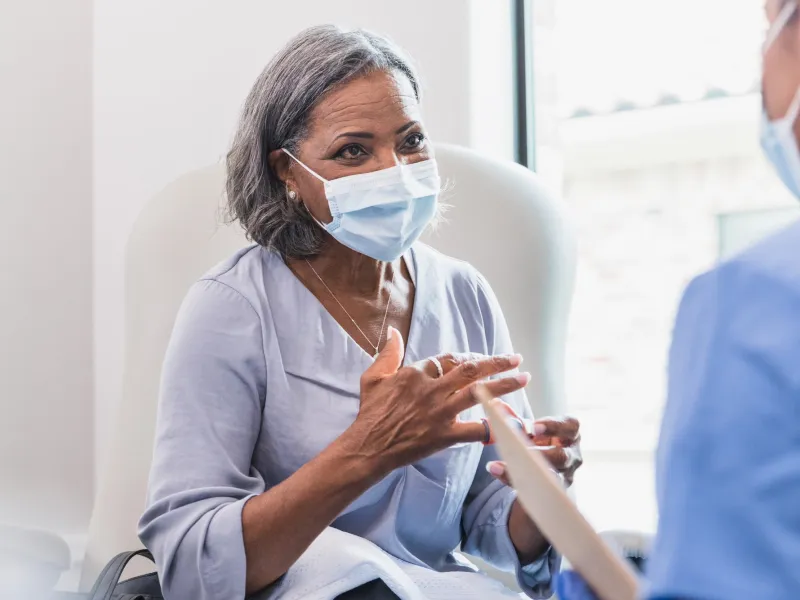
Find the Best Help for Your Heart
Your heart is a vital organ. And vascular surgery is one of the most serious procedures you might face. If you do, you want to know you’re working with leaders in treatment and care.
At the AdventHealth Cardiovascular Institute, our surgeons specialize in minimally invasive surgical techniques to promote faster healing and reduce pain and scarring — so you can reduce your time spent in the hospital and move past the uncertainty of vascular disease.
Our dedicated surgical team includes nurses, techs, perfusionists and anesthesiologists who work closely with our cardiovascular surgeons to provide expert care for patients diagnosed with:
- Aneurysmal disease
- Carotid artery disease
- Peripheral arterial disease
- Stroke
- Venous diseases
- Venous thromboembolism
We’re here to help you find the right physician or a location that’s convenient for you.
Surgical Care You Can Trust
- Experts in Minimally Invasive Surgeries
-
Not only are our physicians expertly trained in the diagnosis and treatment of all forms of arterial and venous conditions, we treat more vascular patients than any other hospital system in the country.
- State-of-the-Art Facilities
-
Our operating suites are specifically designed for cardiovascular surgery with the latest leading-edge equipment and technology required for the most complex cases.
What is Vascular Disease?
Vascular disease refers to a variety of conditions affecting the blood vessels that make up your circulatory system. These vessels are the pathways through which blood and oxygen are pumped to essential organs like the heart, brain, kidneys and lungs, as well as the rest of the body.
Your body relies on an extensive network of blood vessels to function normally. When a problem occurs anywhere along this system, it results in vascular disease symptoms that are painful, disabling and potentially life-threatening.
We’re here to help you get the answers you need, with physicians who focus on finding the right plan of care for the whole you. Learn more about these conditions and treatment options in our free guide.
Vascular Disease Treatment for a Healthier Heart
Peace of mind: it’s what you want when you’re preparing for vascular surgery. That’s why your treatment journey will be guided by one of the best teams in the nation. You don’t have to go far for comprehensive treatment — it’s waiting for you right here.
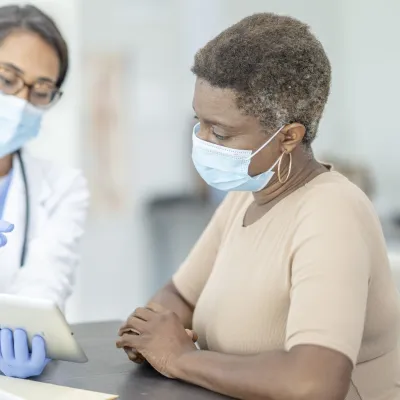
Abdominal Aortic Aneurysm Repair
We have one of the lowest complication rates in the country for abdominal aortic aneurysm repair.
While we can usually repair these types of aneurysms with a stent using a procedure called endovascular aneurysm repair (EVAR), open-heart surgery is sometimes required to remove the aneurysm and replace it with a graft.
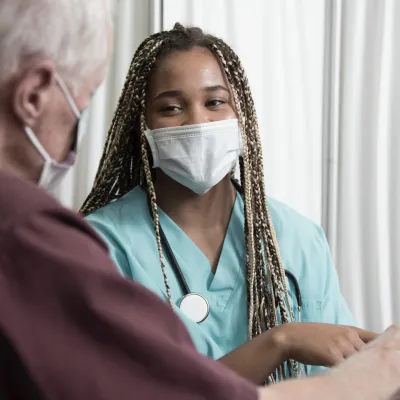
Arterial Bypass
To address certain types of aneurysms where blockages cannot be reopened with a balloon or stent, arterial bypass surgery is used.
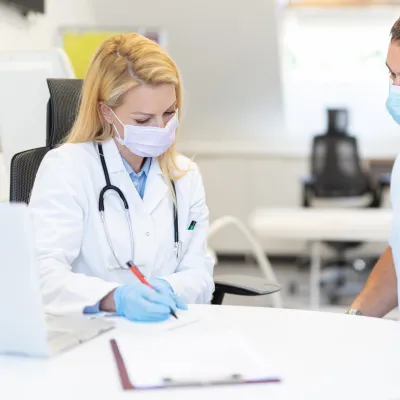
Endarterectomy
During an endarterectomy, surgeons clean out an arterial blockage — commonly in the carotid artery (the artery to the brain). The inner layer of the artery that contains the plaque is cleaned out and often repaired with a patch to minimize the risk of the blockage recurring.
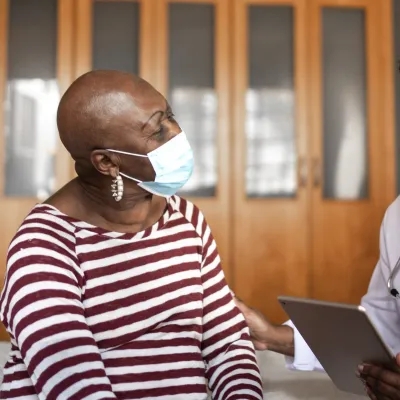
Endovascular Therapy
Endovascular therapy describes a group of minimally invasive techniques for treating arteries and veins.
Arterial blockages are treated via catheterization: a needle is placed into the artery and dye and X-rays identify the blockage. Then a balloon or stent is placed across the area and expanded to remove the blockage.

Varicose and Spider Vein Therapy
The most common procedure for vein problems is ablation, an office procedure in which an IV is inserted into the vein and the vein is “burned out.”
Other treatment options include injection therapy (sclerotherapy) and phlebectomy in which small incisions are made and the veins are removed directly.
Helping You Understand the Signs of Vascular Disease
- Aneurysmal Disease
-
When an artery weakens, it creates a bulge in the artery wall. Any artery can be affected, but the most common is the abdominal aorta. Depending on the aneurysm’s location, it may be monitored instead of treated.
Tests to study aneurysms include ultrasound and computed tomography (CT) scans. Aneurysms can often be repaired with stents, but sometimes surgery is necessary. Stopping smoking and controlling your blood pressure as pressure can help prevent additional bulging.
Depending on its location, an aneurysmal disease can sometimes be diagnosed through a simple physical exam. To study the size and potential need for repair of the aneurysm, ultrasound or CT scans may be performed.
- Carotid Artery Disease
-
Your carotid arteries are the major arteries in your neck that supply blood to the brain. Carotid artery disease is a major cause of stroke in the United States.
Risk factors include tobacco use, high blood pressure, high cholesterol, diabetes and advanced age. When symptoms occur and the blockage is 50% or higher, surgery or stenting is usually recommended.
To diagnose carotid artery disease, your physician will listen to your neck for a swooshing sound called a bruit, which may be a sign of a blockage. Further diagnosis is often done by ultrasound, X-ray or CT scan. Occasionally an MRI is needed.
- Peripheral Arterial Disease
-
Peripheral arterial disease (PAD), also known as peripheral vascular disease (PVD), is a vascular disease that happens when plaque builds in the arteries, usually the legs.
Often, the first sign of PAD is pain or numbness in the calf while walking or climbing stairs. It can be treated with non-operative management, including lifestyle changes like diet and exercise. If invasive treatment is needed, an angiogram or catheterization can be performed, and surgical bypass may be necessary.
Diagnosing PAD involves a physical exam and an ankle-brachial index (ABI). An ABI is done by measuring the blood pressure in the legs and comparing it to that of the arm. An ultrasound of the arteries and a CT scan may be done, too. Invasive testing includes angiography or catheterization, which allows for blockage treatment with a balloon or stent.
- Stroke
-
A stroke happens when blood flow to a portion of the brain is blocked. After a few minutes without oxygen, brain cells begin to die. It can cause lasting brain damage, disability or even death.
Most importantly, a stroke is a medical emergency. Call 911 right away if you suspect a stroke in yourself or a loved one.
There are two main types of stroke, including:
- Ischemic stroke: This is the most common type, and happens when an artery in the neck or brain becomes blocked, often from a blood clot. This blockage prevents blood and oxygen from flowing to the brain, resulting in brain cell death.
- Hemorrhagic stroke: This type occurs when a blood vessel in the brain breaks, bleeding into the brain tissue. This also leads to the death of brain cells.
A transient ischemic stroke, also called a “mini-stroke,” is a short episode of stroke symptoms that does not cause permanent damage but can lead to a serious stroke in the future.
A stroke can include the sudden onset of:
- Loss of balance or coordination, difficulty walking and dizziness
- Difficulty seeing, double vision or loss of vision
- Numbness or weakness in the face, arms or legs (particularly on one side of the body)
- Difficulty speaking or understanding language
- Severe headache with no known cause (sometimes called a “thunderclap” headache)
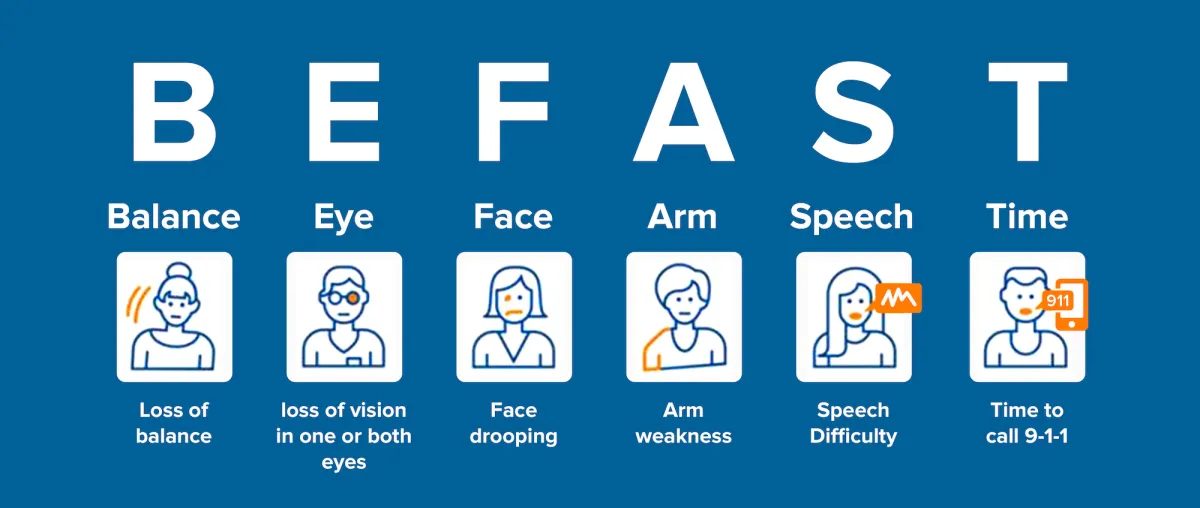
When you understand stroke symptoms, you can be better prepared and empowered to recognize them and call 911 right away.
- Venous Diseases
-
Venous diseases are abnormalities like varicose and spider veins.
Symptoms can include fatigue, aching, throbbing, heaviness in the legs, as well as discoloration and skin ulcerations.
Treatments include conservative, noninvasive management, as well as outpatient procedures like vein injections or removal.
To diagnose a venous disease, your doctor will evaluate your symptoms and your medical history. A physical exam can show if varicose veins are present. Ultrasound of the legs can identify clots in the vein as well as problems with vein function. Occasionally, a CT scan will be done to examine the veins in your abdomen and pelvis.
- Venous Thromboembolism
-
Venous thromboembolism (VTE) is a disorder that includes deep vein thrombosis and pulmonary embolism.
Deep vein thrombosis (DVT) develops when a blood clot forms in a deep vein, usually in the lower leg, thigh or pelvis.
A pulmonary embolism (PE) develops when a clot breaks loose and travels through the bloodstream to the lungs.
Risk Factors and Prevention
Everyone is at risk for vascular disorders. With the increase in obesity and Type II diabetes in Americans and as the population ages, vascular problems can happen in anyone at any time, and affect men and women equally.
- What Causes Vascular Disease?
-
Arteriosclerosis happens when plaque forms in your arteries. This leads to blockages, which frequently lead to vascular issues. Causes of arteriosclerosis and vascular disease include:
- Autoimmune conditions
- Being age 50 or older
- Being overweight
- Certain medications
- Cold temperatures
- Diabetes
- Emotional stress
- Heart disease or a family history of vascular or heart disease
- High blood pressure
- High cholesterol
- Infections
- Pregnancy
- Sedentary lifestyle
- Smoking
- Structural defects or trauma to a blood vessel
- Preventing Vascular Disease
-
It isn’t always possible to prevent vascular disease, but you can take action to lower your risk:
- Don’t smoke: Nicotine causes blood vessels to narrow and restrict blood flow
- Eat healthfully: Eat lots of vegetables and lean meats
- Keep your blood pressure and cholesterol levels low
- Stay active: Exercise regularly and maintain a healthy body weight
- Talk to your doctor: Taking aspirin daily may help
What to Do When You Think You’re Having a Heart Attack
If you think you’re having a heart attack, call 911 immediately.
About 85% of heart damage happens within the first two hours of a heart attack. Taking the Early Heart Attack Care™ (EHAC®) pledge can prepare you for identifying the subtle danger signs of a heart attack and acting upon them immediately, before heart damage happens.
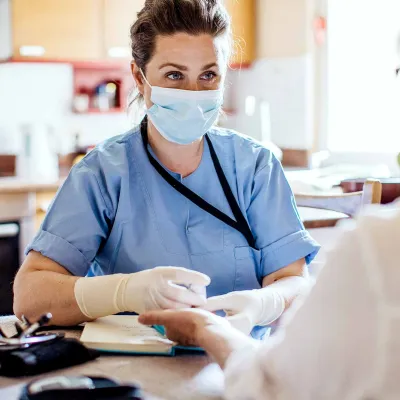
A Team with a Record of Success
We’re confident that in our care, you’ll receive the world-class vascular disease treatment you deserve.
